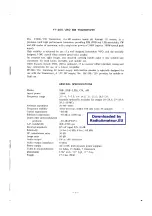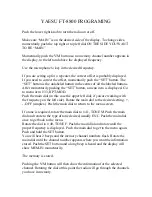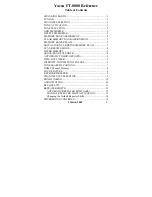
LVDS83BTSSOPEVM Configuration
5
SNLU233 – October 2017
Copyright © 2017, Texas Instruments Incorporated
LVDS83BTSSOPEVM User’s Guide
4. Toggle SN75LVDS83B shutdown to SHTDN = VIH.
5. Send > 1 ms of black data to allow the SN75LVDS83B to be phase-locked and allow the display to
show black data first.
6. Start sending true imaging data.
7. Enable the backlight.
Power-down sequence (SN75LVDS83B SHTDN input initially HIGH):
1. Disable the LCD backlight and wait for the minimum time specified in the LCF data sheet for the
backlight to go low.
2. Switch the video source output data from active video to black data image (all visible pixels turn black)
on a drive > 2 frame times.
3. Set SN75LVDS83B SHTDN = GND and wait for 250 ns.
4. Disable the video output of the video source.
5. Remove power from the LCD panel for the lowest system power.
2.4
Signal Connectivity
While there is no formal, industrial standardization for the input interface of LVDS LCD panels, over the
years the industry has aligned a specific data bit order format.
through
show how each
signal must be connected from the graphic source through the SN75LVDS83B input/output and LVDS
LCD panel input.
The outputs are available at J1 to J10 for direct connection to oscilloscope inputs. Matched length cables
must be used when connecting the EVM to a scope to avoid inducing skew between the noninverting (+)
and inverting (-) outputs.
Power jacks P1 to P4 are used to provide power, ground, and signal ground reference for the EVM. The
power connections to the EVM determine the common-mode load to the device, because LVDS drivers
have limited common-mode driver capability. When connecting the EVM outputs directly to oscilloscope
inputs, setting the common-mode offset voltage of the oscilloscope is required, because it presents low
common-mode load impedance to the device.
In
through
, the power supply is used to provide the required 3.3 V to the EVM.
Additionally, the signal ground input from the power supply is used to offset the EVM ground relative to the
DUT ground. Obtain optimum device setup by adjusting the signal ground voltage on the power supply
until its current is minimized. It is important to note that use of the dual supplies and offsetting the EVM
ground relative to the DUT ground are simply steps needed for the test and evaluation of devices. Actual
designs would include receivers 100-
Ω
termination resistor across each differential input while keeping a
high-impedance between each RX input signal and GND, which would not require the setup steps
previously outlined.






































